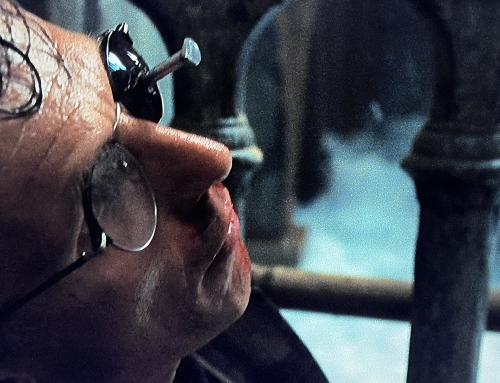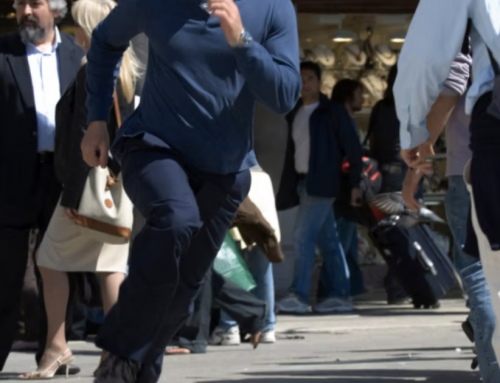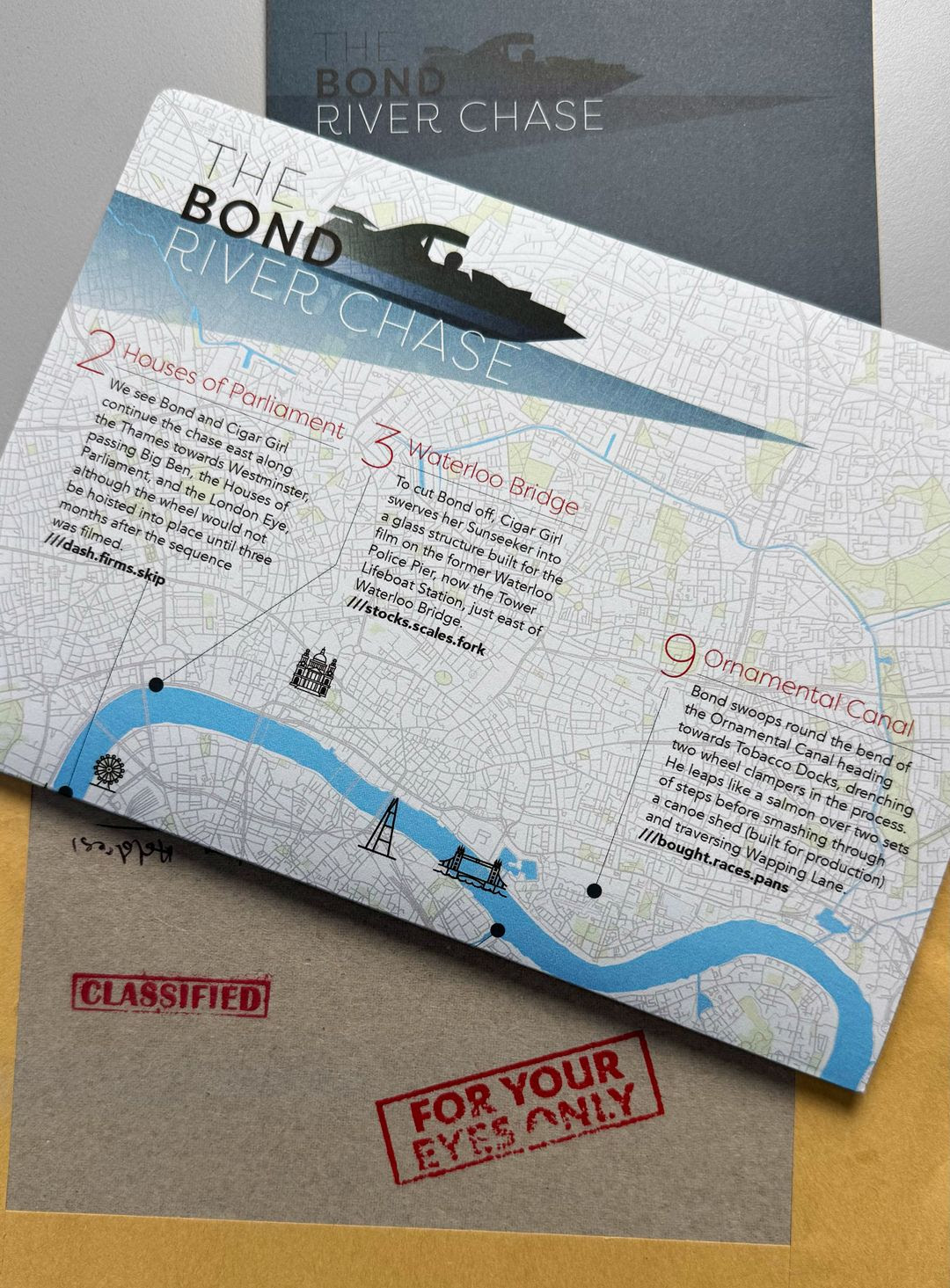[…] the designer houses can’t make costumes. They can’t go to different eras they can only make what they make. So, that’s why they need me.
– Leonard Logsdail.
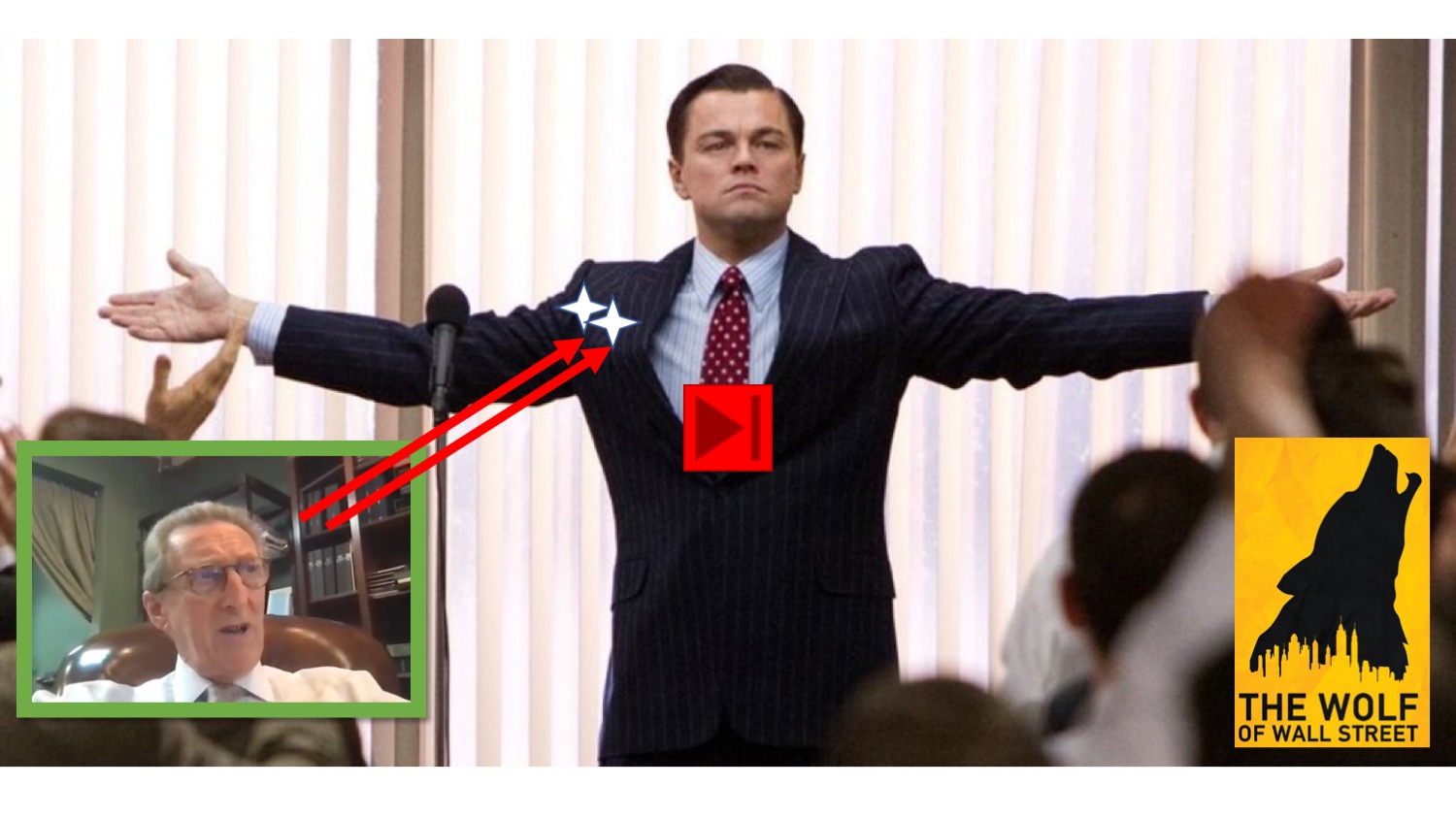
My interview with Leonard Logsdail now on YouTube (click)
On the podcast
On this episode I speak to Bespoke New York Tailor Leonard Logsdail about his career in movies. Leonard has made suits for Bespoke New York Tailor in The Wolf of Wall Street, Denzel Washington in American Gangster and some suits for Daniel Craig during his time on Broadway. Leonard has quite the career and film resume. We talk about other films he has worked on, including the upcoming House Of Gucci.
Listen to my interview with Leonard Logsdail on the podcast (available to listen on iTunes, Stitcher or Spotify or in the player below). You can also catch our chat on YouTube. Below are some moments transcribed (loosely) from the interview.
Where is Leonard Logsdail based?
PB: (Me Pete Brooker) Leonard. You’re New York based at the moment, correct?
LL: (Leonard Logsdail) Not at the moment. I’m permanently New York base. I’ve been out here for 30 years now.
PB: Leonard, did you begin on Savile Row before you moved to New York?
LL: Yeah, well, I started, I’ve worked on Savile Row, but actually, my business was on Sackville Street, just the end of the end of Savile Row. And I had my business for about 20 years, 20 years before I moved over here. And this year in December, I’ve had my business for 50 years.
So I had three or four jobs before I started my own business. And I kept on getting fired. Because I was a 21 year old who thought we knew everything about that that was about tailoring, so I kept getting fired. So that’s when I started my business. I figured it’s the only way to hold on to money.
PB: Were you in the same ecosphere as some of the other tailors that were working along Sackville Street & Conduit Street like say Cyril Castle and Anthony Sinclair etc.
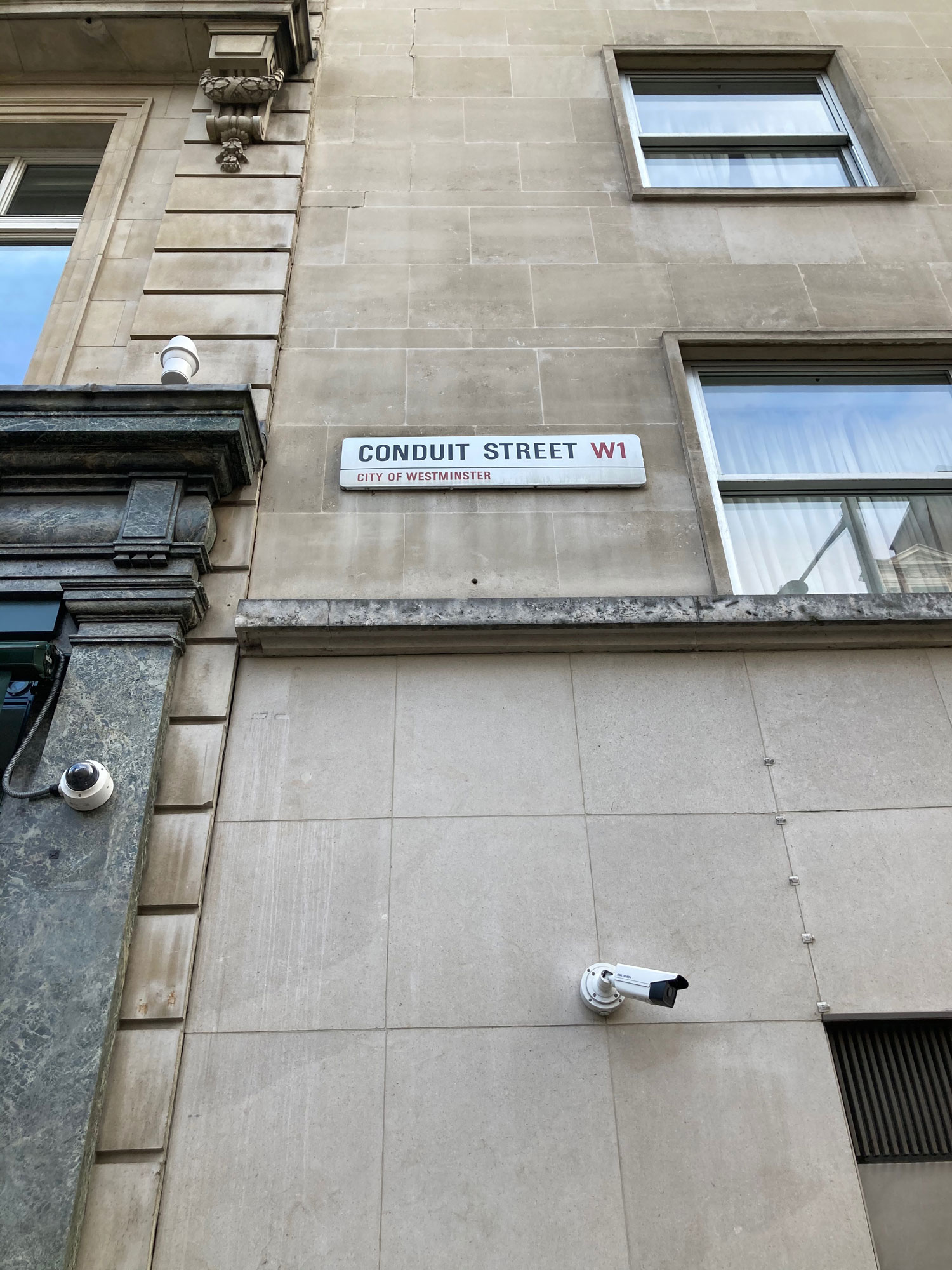
London in the old days
LL: Well, so Castle and Sinclair they were kind of before my time that I was I was still a young turret back then when they were making for Sean Connery. And I don’t know that I met either of them. They’re pretty much retired before I really got myself going. When I first started, I was in Carnaby Street above all the all the boutiques back in 19, December 71. And I pretty much stayed that side of the street. And I used to go out because it was such a dump. We used to go out and see all of our clients in their offices and their homes.
So we really didn’t get that much time to socialise, only as we got busier. And then we moved to Sackville Street and started working there, that we were kind of accepted. Actually, the people didn’t want to accept us. I bumped into a very well-known tailor in the street that I knew. And he said I understand you started your own business, and I said yes I have. He said how dare you start your own business. And I said to him, do you have a good business? He said yes. And I said, do you have a good relationship with your customers? He said yes. And I said, Well, what are you worried about?
PB: I guess as much as the community that people try and make it out to be there’s also a big territory war amongst tailors no?
LL: Well to a degree but we really started with only a couple of clients and actually, most of the most of the businesses you see on Savile Row are where from cutters that then took their book and started themselves.
And I had two clients to my name when I started and just worked hard at it. You know, I started by going out to the city, to Kensington and Knightsbridge and places like this and Chelsea. Then I got my first sniff of a client in Amsterdam, my first business trip was to Amsterdam. And then the next thing I know, I went to Brussels, Rotterdam that Hague, Amsterdam, Eindhoven, Luxembourg, Frankfurt, Geneva, and Paris.
I was driving that about six times a year seeing clients. And then as that built up, I kind of had an inkling to come to the United States. And so I had one or two clients. I came out I had two days in New York and two days in Washington and built it up from there.
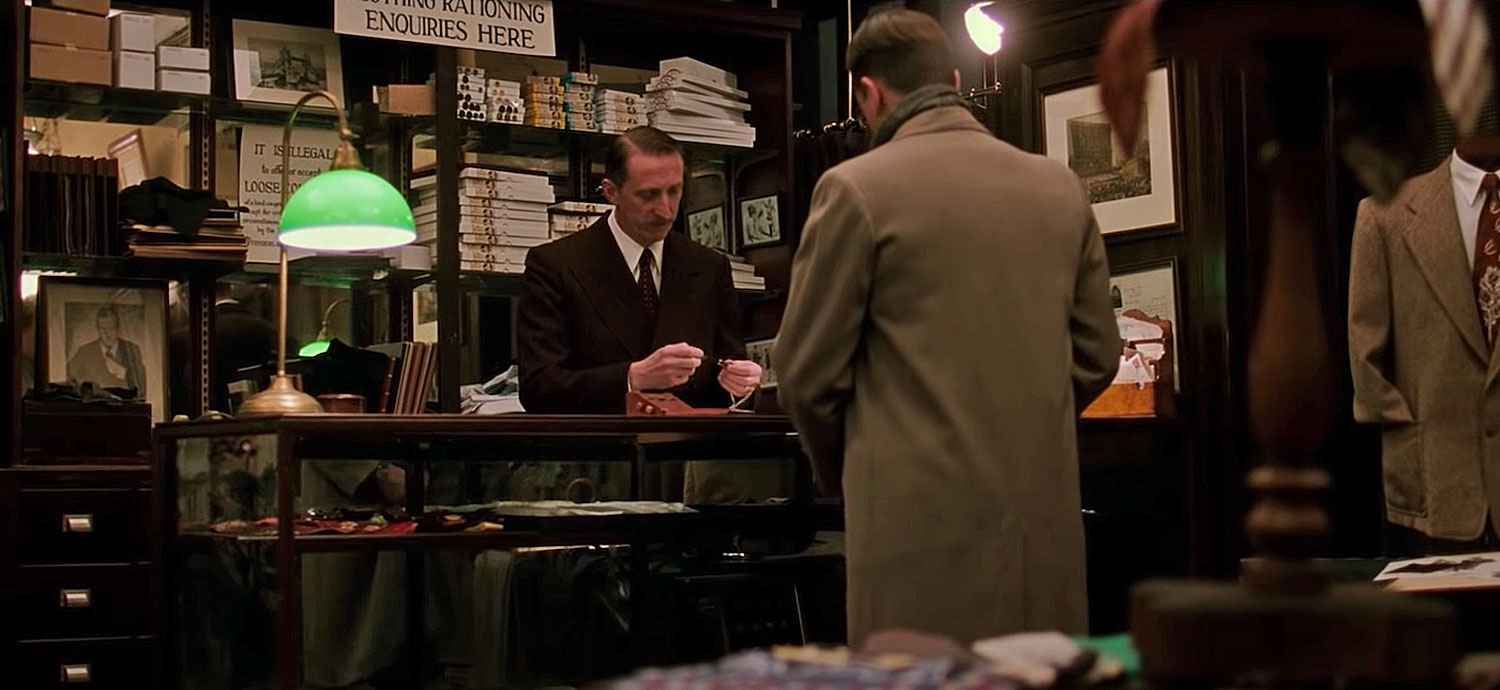
Leonard Logsdail as the tailor in The Good Shepherd serving Matt Damon
Leonard Logsdail on his big break
PB: Was it The Good Shepherd, where you started out as getting your big break?
LL: It was The Good Shepherd effect I was sitting talking to a friend of mine from San Francisco who was visiting me. And the phone went and there’s a this girl on the phone, Michelle. I spoke to Michelle a couple of times, and she said, Would you be interested in making a suit for Robert De Niro? So I said, hang on a minute, and I spoke to my friend and I said this lady on the phone that wants to know if I should make a suit for Robert De Niro. What do you think? And he’s just looking at me with his mouth open. So I said, Yes, I’ll do it.
PB: And you star in that film as well. You were the tailor in that film?
LL: Yeah, yeah, I would say that Matt Damon had a speaking part with me.
PB: Nice.
LL: Well, that was interesting as well. I was fit De Niro. And he’s kind of looking at me quizzically in the mirror. And he turned around and said, You know, there’s a speaking part in this movie for an English channel, would you like to be in it? I said, Sure. I’ve never been in a movie sounds great. So he said, Okay. You’ll hear from my office. And then I found out afterwards, he was actually the director as well.
When I saw him a couple of weeks later, I hadn’t heard anything. And he said to me, did you hear anything? And I said, Are you just pulling my leg? I didn’t hear anything, but it was okay. And he was very annoyed. He said, You should have heard, I got a call that evening to go for an audition the next day. I went along for the audition.
Then I got a call the following day to go for another audition with De Niro. And so I had one of those classics. When we finished we ran through it a few times. He thought about it put his hand out and it goes well Leonard, thank you for coming by. We’ll be in touch and I thought that’s it. But anyway, I did it. It was a lot of fun.
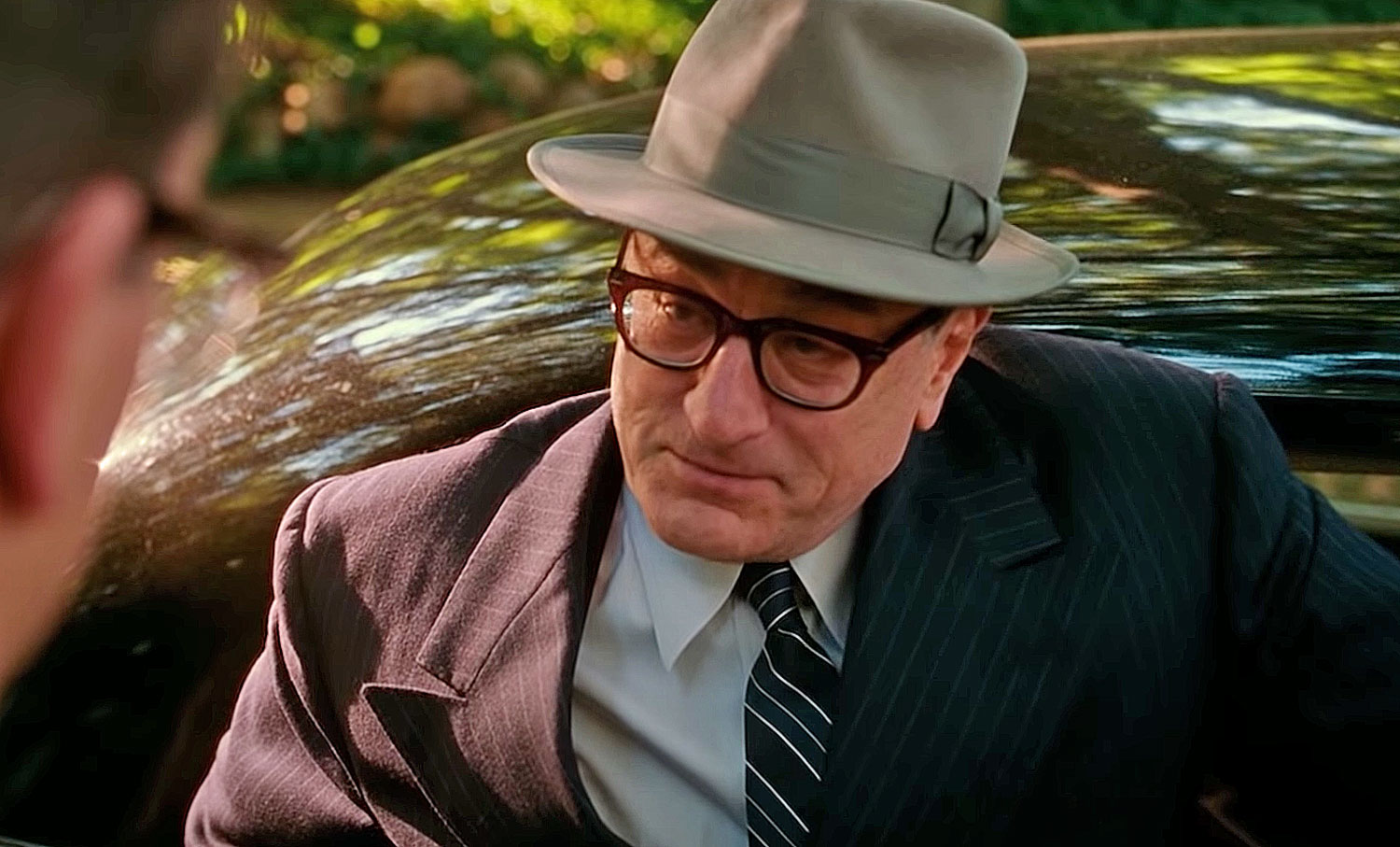
About sourcing the fabric
PB: And you got to work with De Niro again in The Irishman right?
LL: Before that I worked with him on The Intern then The Irishman.
PB: And how does it work? Is it just coincidence that you kind of wind up with some of the same actors? Is it more of a relationship with the costume designers than the actors themselves?
LL: Absolutely, and not only the costume designers, it’s their assistants. Because the assistants moved from movie to movie and often with new costume designers. And the costume designers will say ‘Well, where do we go to get suits,’ – It’s never the actor. Okay? What was our olden days when the movie stars all had their suits made and they all had their personal tailors. Now they get freebies from all these places and from the design houses. But the designer houses can’t make costumes. They can’t go to different eras they can only make what they make. So, that’s why they need me.
PB: Well, I was gonna ask because films like The Good Shepherd, and The Post that you worked on as well, these all have to be very period accurate pieces. Are they harder for you to do in terms of sourcing fabric?
LL: I have a really good relationship with the costume designers. I say to them, Look, I work for you. And I understand that I have an opinion. Do you want me to give an opinion? Or do you want me just to be quiet? And I’m quite happy to do what you want. And because now, you know you have an opinion. I said if you disagree with me, you just tell me I’m okay with that. And so because of that, I’m able to really assist them.
Because if I show them some fabrics and they say no, that’s terrible I put it away, and you’re learning bit by bit you can find them out. But I have a tonne of fabrics up here. The hardest part now is when you go into the 40s and 50s or before, when the lightest weight suits we were making back then were 15/16 ounces to find a good 15/16 ounce suit. Now it’s almost impossible.
PB: Can they not be made or manufactured from new?
LL: It’s expensive. And often it’s unlikely, they need to make 120 yards of it or metres. And they may only need it for two or three suits. So it’s very difficult. So often now it’s a matter of making do with the heaviest fabrics that we have.
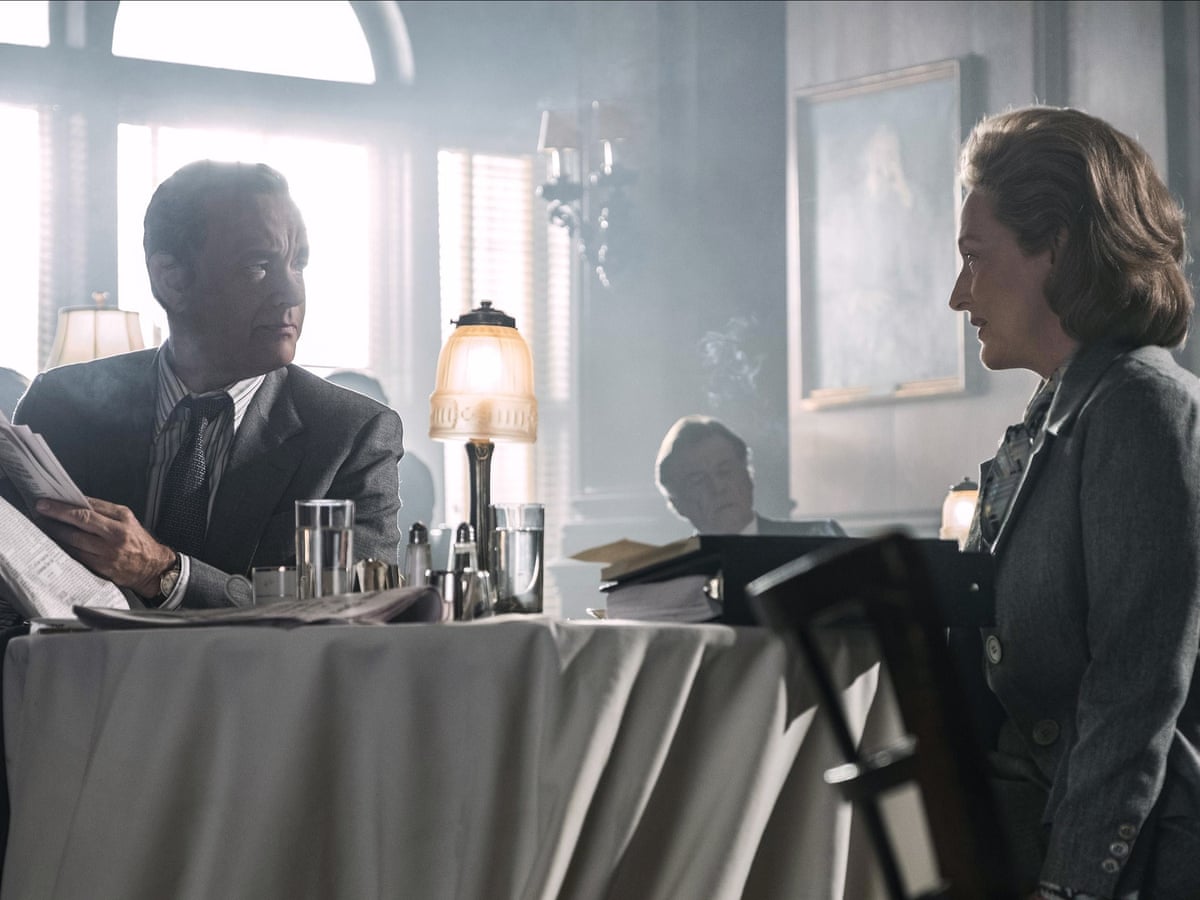
The Post – Tom Hanks wearing Leonard Logsdail (Image source: The Guardian).
That Denzel Washington story
PB: Do you ever think, Crikey, I’m already flat out. How am I going to fit in a whole film production around what I’ve already got for my personal clients?
LL: If I’m flat out I’ve turned movies down. Because the movie industry is fickle. It comes and goes you know. I get a lot of telephone calls, we’re thinking to make suits for such and such a movie, can you make it what’s the price? We’re expensive. So that generally, pushes them off. They never call and say we’ve gone somewhere else.
I’ve turned them down because they come and go. My bread and butter, my regular clients want a four to six suits a year. You upset them then you’ve upset the core of your business. So I only accept a movie when I know that I can do it properly. And I won’t let the movie house down. So I only accept it if I know that I could do it.
PB: Maybe you can just tell me how you got involved with The Wolf of Wall Street.
LL: Well that was that was Sandy Powell and I worked with her before on one or two movies. I shouldn’t say this, that there was a famous designer that wanted to use (suit) but couldn’t make the period pieces. But he actually paid to say that he had. He paid my bills. I was going home one evening and there was there was DiCaprio in a suit that I made and it said a suit in XXX and then this designers names as a clothing. But it was one of mine, that’s what he paid for. But to answer your question, I got a call. And then I work very well with Sandy, we’ve got on very, very well together.
I’ve been out to Los Angeles a number of times where they’re doing different fittings with different people. And she trusts me completely. Because I produce what i say I’m going to produce in the time that I say that I’m going to do it. Because when you when you mess around with the timing, I give you an example.
When I did American Gangster, they moved from Harlem. So the Hilton Hotel, which is like two blocks from where I’m sitting right now. I got a call at 7:38 o’clock my morning from the costume designer, and she said, Where are you? And she cursed like a trooper, where are you? Just get your ass up here. We’ve got a suit here that’s all creased and it needs to be pressed. And I said, Okay.
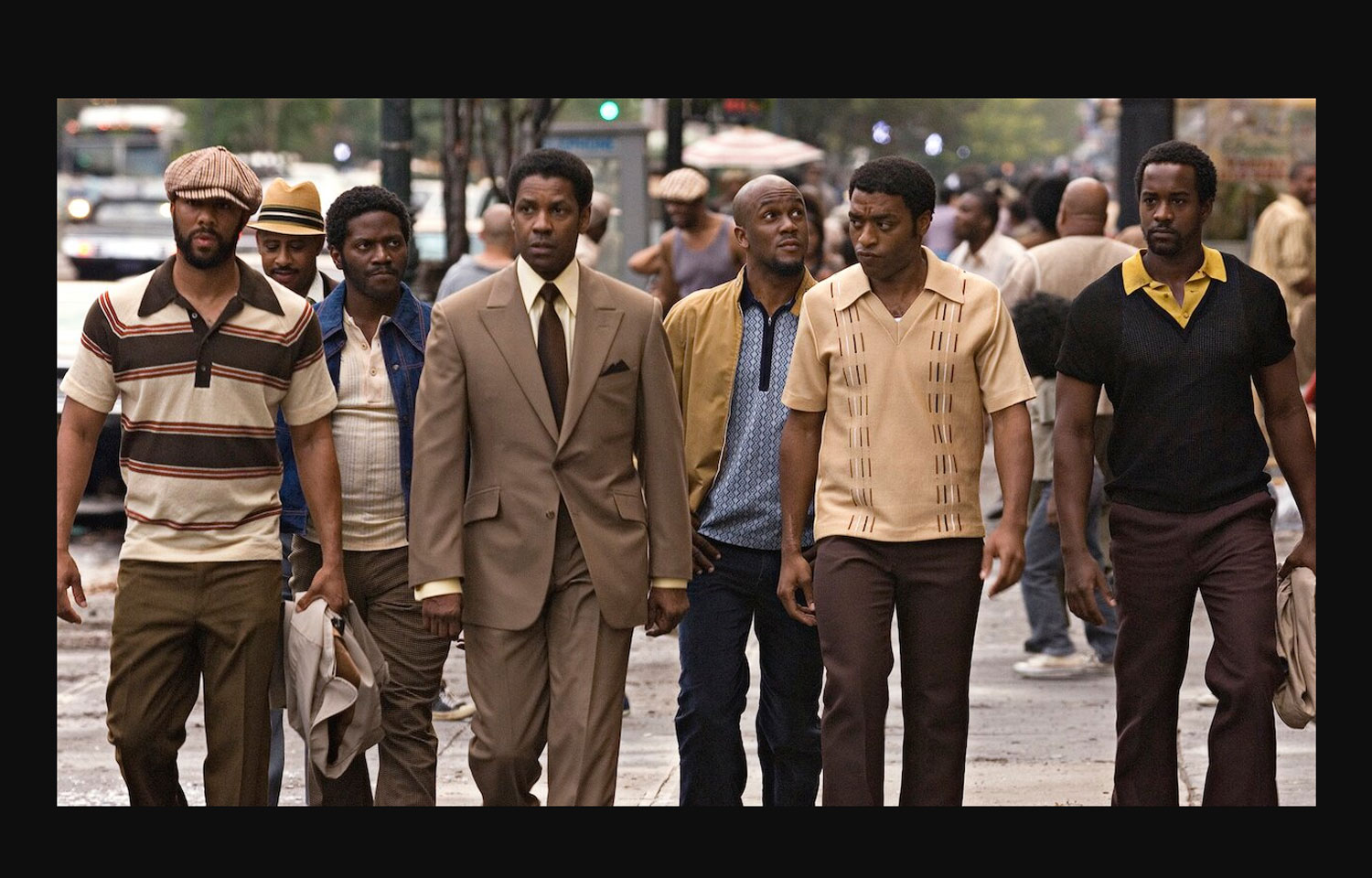
Denzel Washington wearing a Leonard Logsdail suit in American Gangster (2014) image source – Netflix
Leonard Logsdail (cont..)
So I walked up there and found the costume truck. I looked at it, they put all of his suits onto the truck. And they push them over so that they clamp them down. And this was like a seven, eight ounce tropical and creased it. I said, Okay, I’ll press it. So I took it back. And I just got back here. And she said, Is it ready yet? I said I’m still working on it. So I’m walking back. And she called me, Where are you? And I said, I’m about two blocks away. She said it’s costing $10,000 a minute, and they’re waiting for that.
So I ran and I met her into the lobby of the hotel. And I thought she would just take it from me. But she said Follow me. So we went to the elevator. And they were filming in the penthouse. And somebody had let been holding the elevator. So I’m looking at my watch. The next one says four minutes. That’s $40,000 they’ve just lost. And then we went to the went to the top. And she took me first of all to Denzel Washington and I’d spent a lot of time with him put the suit on and he says how is it Leonard? I said it’s fine. It goes great.
Okay, and off it goes. And then it she took me into see the director Ridley Scott. And so that I could tell him what happened. Because she was afraid she was gonna get billed for that.
PB: That was gonna come out of her budget?
LL: Yes. It got squashed in the truck, has nothing to do with the costume design.
PB: You were in the film also right?
LL: They called me up and they said, Would I go? Yeah, they were looking for a tailor. You want to do it? Truthfully, I lose money when I do things like that, but I thought it would be a great experience. So yeah, I took him (Leonard’s son) on to the set. And we were standing talking. And then DiCaprio came in and saw me and he walked straight over to me. Then he went and got Scorsese and brought him over and introduced them to my son. But you know if you blinked you would have missed it.
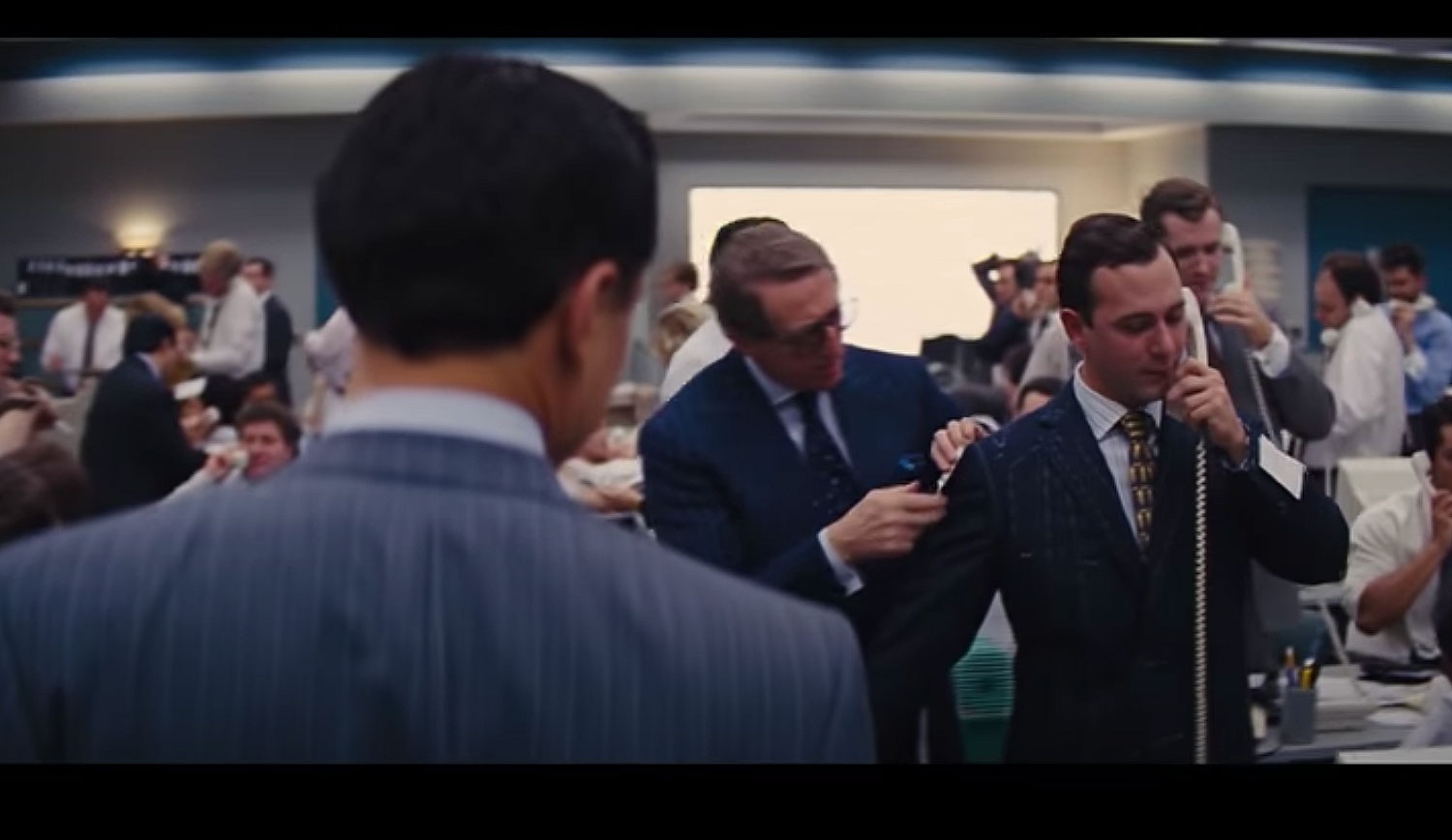
Leonard Logsdale and his son in Wolf of Wall Street
And onto The Wolf of Wall Street
PB: I know you made suits for Jonah Hill also right?
LL: I went with Sandy. It took place in San Francisco in Los Angeles, it was fascinating to me. It was a clothing warehouse. So while she was looking for what she wanted, I just wandered around the place and I found myself in the 1930s 1940s and then they’ve got sizes 38/40 42/44 upwards great, blues and checks and browns and tweeds and we’re just doing in the 38 it was completely full.
I’ve never seen a place like it. So they get a lot of their suits from there, they pull them in and they only use me by and large for the top actors and then they will use people like XXX (audio unclear, Anthony Gilberto?) for the for the background scene because that’s made in a factory and it’s made cheaper and it suits their budget.
PB: What is Anthony Gilberto doing these days?
LL: All of his business is mainly theatre, not so much movies now. I don’t think he needs it, because he’s really well known in the theatre business. Although, you know, he probably regretted moving away from his regular clients, when COVID […} The Gucci movie, when that came along. That was a lot of suits at a time when there was not a lot of business.
PB: And you did work on the House of Gucci movie as well, maybe just tell me about some of the experience some of the highlights of working on a film like that?
LL: Well, it was very, very hard because of COVID. I couldn’t go out to Italy to do any fittings, when the actors moved there. So I had to do a bunch of fittings here. I went out to LA twice or three times actually to see Al Pacino and I’ve worked with him two or three times before so that was a very comfortable experience. And it was just backwards and forward. It was more the logistics because the scenes change every so often.
I mean, one time I made a purple plastic suit. For Ben Stiller. Zoolander 2. I got the cloth at five o’clock on a Friday. I’d worked with him before as well. I cut the suit out. We made it over the weekend finished it on the Monday, Monday night it was on the plane. And it was on the set on the Tuesday morning in Rome. That’s rough deadlines.
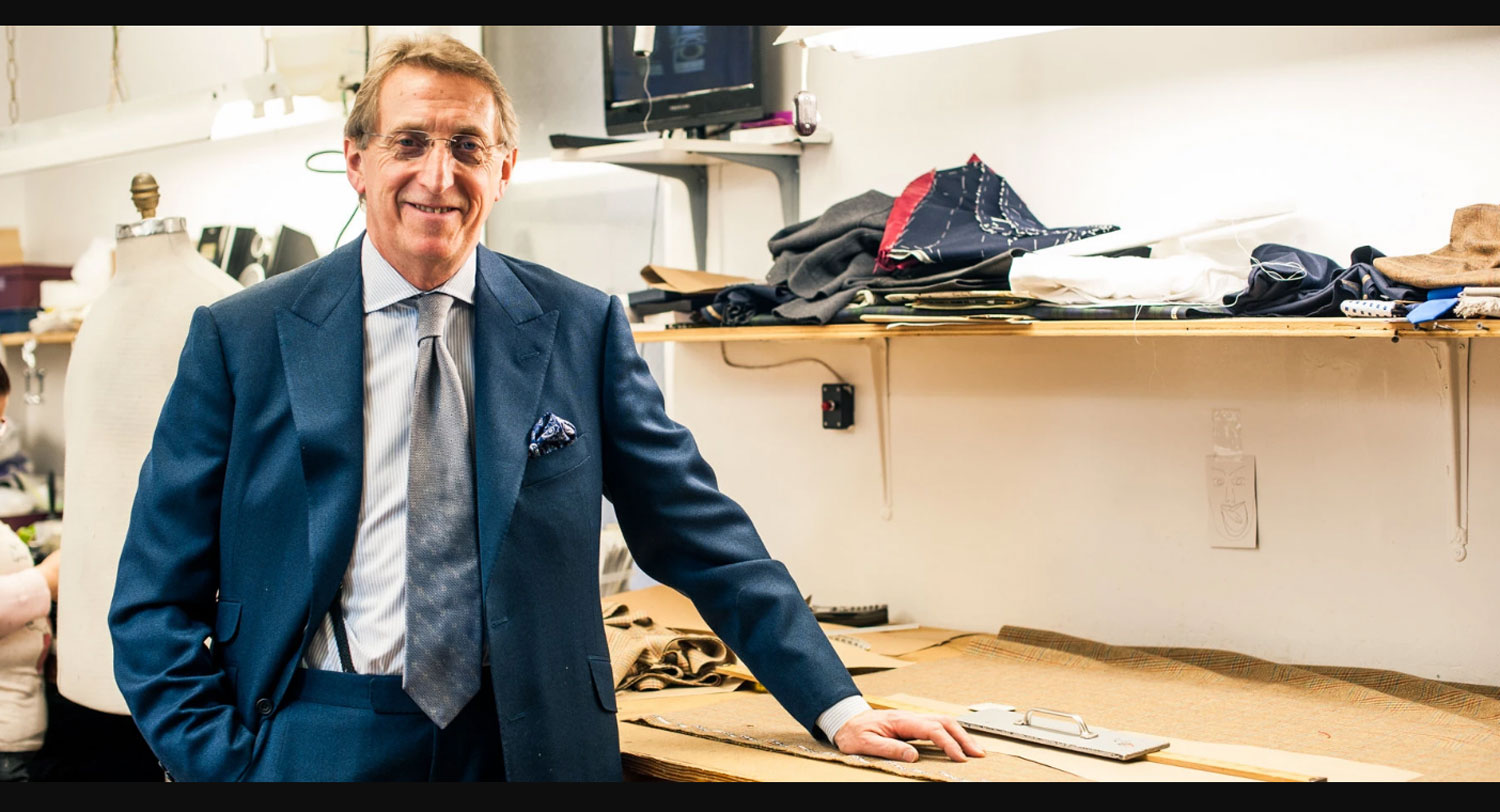
Leonard Logsdail – Image source Articles of Style
And about Bruce Willis
PB: Do you ever get star struck?
LL: No they are means for me to provide for my family. And that’s it. You know, you see all these people you see them with their trousers off them and everybody’s exactly the same. And I’ve only asked for one photograph to be taken with me and that was with Dick Van Dyke for Mary Poppins Returns. And that was with Sandy Powell as well.
I went to his house two or three times out in in Los Angeles there. And he and I grew up watching the Dick Van Dyck show and Mary Poppins the first Mary Poppins. He would tap dance, he would sing to us. You know, he was just a natural. And I said to him, Do you mind if I have a photograph? You know, I’ve never asked. I just like to have one with you.
PB: If you go onto your IMDB by the way, it is quite the resume.
LL: Well, there’s so many that are not in there, that I’ve stopped. I haven’t bothered. My son was doing that. And he went two or three years ago and made a lot of movies since then. But I just haven’t updated it. And it’s something I plan on doing at some point. But there is quite a lot there. You’re right.
PB: Do you ever find that irks you when you make such great suits, but your names not attached to them?
LL: I honestly don’t care. You know. But as I said before, my job is to provide for my family. So I have no ego in that whatsoever. That’s my job. And there was one actor, I could say Bruce Willis. I made a movie for him a long time ago, and I can’t remember the name of it. And when it was finished, he wanted some private stuff made. He had a red suit for an advertising campaign, and a couple of cashmere peacoats for him and one of his assistants. So I delivered them at the set. And then I gave him a bill, an invoice and he said, What’s this, I said, this is an invoice.
‘And this is how you want me to pay for this?’
I said, Yeah, that’s how I provide for my family. I would like to like to get paid for it. So I got paid for it was no problem. So then I had a call from XXX (audio unclear). She said, I know that Bruce Willis really liked your suit for that movie? Well, I’m working with him for one up in Boston now. Go and see him, pick the fabrics out and have you make them I said, Sure. So about two days later, he says I’m really sorry. And I said, What are you sorry about this? He said he won’t work with you. He said, You’re too expensive, because I’d made him pay. And I said, Look, It’s fine you can just carry on.
So about 10 days later, she called up and she said Leonard, would you mind making suits for him, but not putting your labels. We can’t make him happy. It’s just too fast. I made five suits and two sports jackets or three sports jackets for the movie. Never put my label. He was happy as a pig and I got paid for it. So everybody was happy.
I worked with him after that on another movie. And he couldn’t have been nicer. I mean, he and I hit it off. He had a house, he sold it now. A country house about 20 minutes from where I live. And I went out there with the costume designer, drove out there and we did some fittings. He couldn’t have been nicer.
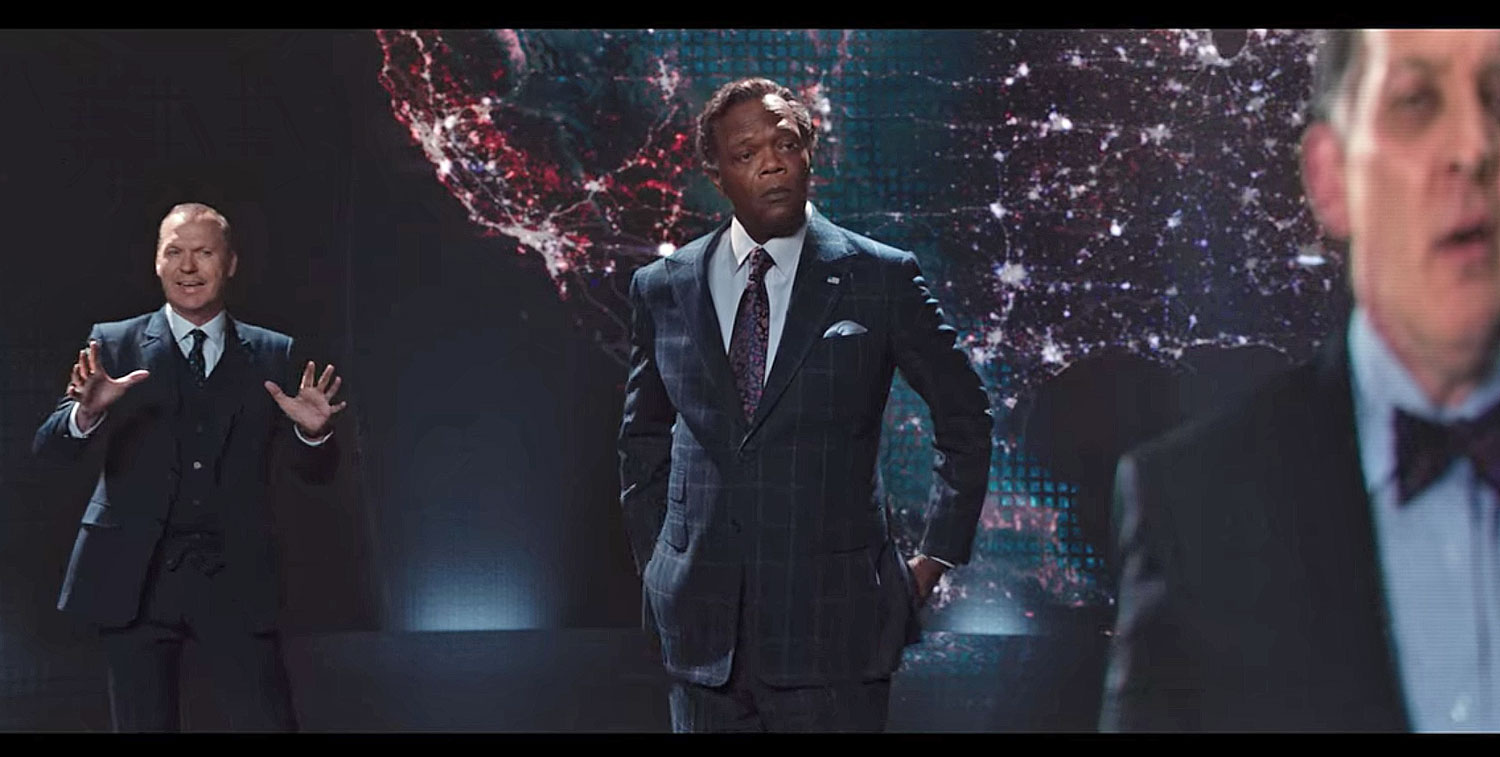
Samuel Jackson in Robocop (2014) Wearing a Leonard Logsdail Windowpane suit
And about Samuel L. Jackson
PB: Do the actors then become clients later down the road?
LL: It’s interesting that you say that because I always thought that I probably would get some business out of it. But they do get so many freebies that when they come to see me they pay. I did some for Sam Jackson, and for Tom Hanks, but only a few and then they disappear. And then you never see them again.
PB: Samuel Jackson was Robocop Right?
LL: He was fun. In fact, I had to go up to Toronto to do fittings for him for that. That’s where they were filming. And one thing I found is I’m working for the costume designer. But sometimes there’s assistance around the director, there’s a producer or two, then there’s the actor and their personal assistant, everybody wants to have an opinion, right? I can’t listen to everybody.
So when I was fitting Sam Jackson on there were about 10 or 12 people watching me fit him. And they’re all saying, well, could you do this? Can you do that? So in the end, I turned my back on them. I turned him around a little bit. And then I just kind of whispered into his ear. And he and I worked out what we wanted to do with it. Then I took the jacket off without anybody looking because otherwise I could never get it finished. You know that’s just experience.
I’m Tweeting about this
For an upcoming episode – out this Sunday, bespoke tailor Leonard Logsdail talks about working on The Wolf of Wall Street. This particular clip I found very interesting.
For full interview subscribe to the podcast (links in bio) or to our YouTube.https://t.co/i0LHw3Sh8h pic.twitter.com/Igzx7cKd3s
— From Tailors With Love (@tailorswithlove) October 8, 2021
For appointments and information on upcoming Trunk Shows you can book through the Leonard Logsdail website.
Shopping List
I am currently listening to the audio book The Wolf of Wall Street by Jordan Belfort. I do recommend it. However, next on my reading list will be Original Gangster: The Real Life Story of One of America’s most Notorious Drug Lords by Frank Lucas. The book that subsequently became the film American Gangster.

